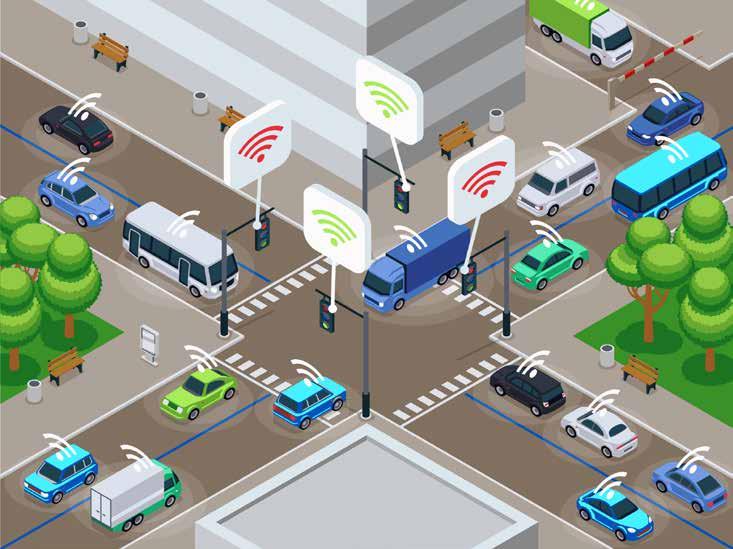
3 minute read
Scenario framework for the COVID-19 situation
Monitor Deloitte’s proprietary scenario planning process begins with defining the focal question that captures the core issue to be explored through the scenarios. In the current circumstances, we identify the focal question to be – “How will
the future of COVID-19-affected business environments shape out? What will be the impact on the automotive sector?”
Advertisement
Having identified the major unknowns that may impact the future business environments, we proceed to singling out the two most critical uncertainties – the unknowns that are most relevant and have the most potential to define future scenarios. Based on our analysis and findings, the ‘Extent of Government Policy Support and Stimuli’ and the ‘Efficacy of Healthcare Response’ are the two most critical uncertainties in the present situation (Figure 2). The uncertainties, along with their two extreme end-points, when superimposed, give rise to four plausible scenarios of the future (Figure 3).
These scenarios can be mapped directly to Deloitte’s proprietary COVID-19 scenarios being short-term, mediumterm, and long-term disruption.
Figure 2. Critical uncertainties and their endpoints 3
Uncontrolled Spread
• Slow technological progress to develop a quick, accurately and cheap medical test to detect the presence of the virus • Lack of support by the administration to ensure
adherence to social distancing norms • Inability to mobilise adequate healthcare professionals
and infrastructure to isolate/ quarantine those infected
Efficacy of Healthcare Response
Reactive and Limited
• Lack of decisive measures to stabilise the economy with a significant infusion of funds into
the banking system • Inefficient transmission of
financial aid to small businesses,
MSMEs and daily-wage workers dependent on regular cash-flow • Inefficient management of efforts to drive consumption and turnaround businesses most severely affected by this pandemic
Extent of Government Policy Support and Stimuli Sustained Containment • Breakthrough in testing speed
and accuracy; governments capable of carrying out widespread testing at much lower costs
• Strict enforcement of social
distancing and quarantine measures to ‘flatten the curve’ and prevent any recurrence of the infection
• Availability of adequate infrastructure and professionals
to tackle possibility of massive outbreaks
Proactive and Significant • Measured and timely
intervention by the central bank to infuse adequate liquidity to drive
consumption • Government-funded bail-out
of industries disrupted by the pandemic; short-term working capital support to keep them afloat • Reforms in the unorganised sector; timely and adequate downturn compensation for MSMEs and
daily-wage workers
Figure 3. The four plausible scenarios of the future 3
Scenario 2: The U-Curve
Sustained Containment
Scenario 1: The V-Curve
Reactive and Limited
Medium-term Short-term disruption; disruption; significant, moderate, contained loss contained loss Scenario 3: The L-Curve Proactive and Significant Scenario 4: The W-Curve Efficacy of Healthcare Response Extent of Govt. Policy Support and Stimuli
Long-term disruption; severe, permanent loss Medium-term disruption; significant, recurrent loss
Uncontrolled Spread
Scenario - 1
The V-Curve (Short-term disruption) Successful containment of the virus, supported by strong policy response prevents permanent structural damage; the agile response by businesses after removal of restrictions results in sharp recovery.
Scenario - 2
The U-Curve (Medium-term disruption) The virus’s spread is contained but not supported by adequate/timely economic stimulus to support failing businesses; structural damage to the economy impacts the fundamental dynamics of many industries, resulting in long-lasting effects followed by a slow and muted recovery.
Scenario - 3
The L-Curve (Long-term disruption) The virus continues to spread and causes disruption globally; inadequate economic stimuli leads to major structural damage to the economy and long-term recession; there is permanent loss of output as firms go bankrupt and employment and production levels take a long time to revive.
Scenario - 4
The W-Curve (Medium-term disruption) The virus continues to spread, but strong policy response keeps economic growth afloat; recurrences of the pandemic are seen, but businesses adapt through mini-recoveries, and head towards a slow, nearcomplete recovery.





